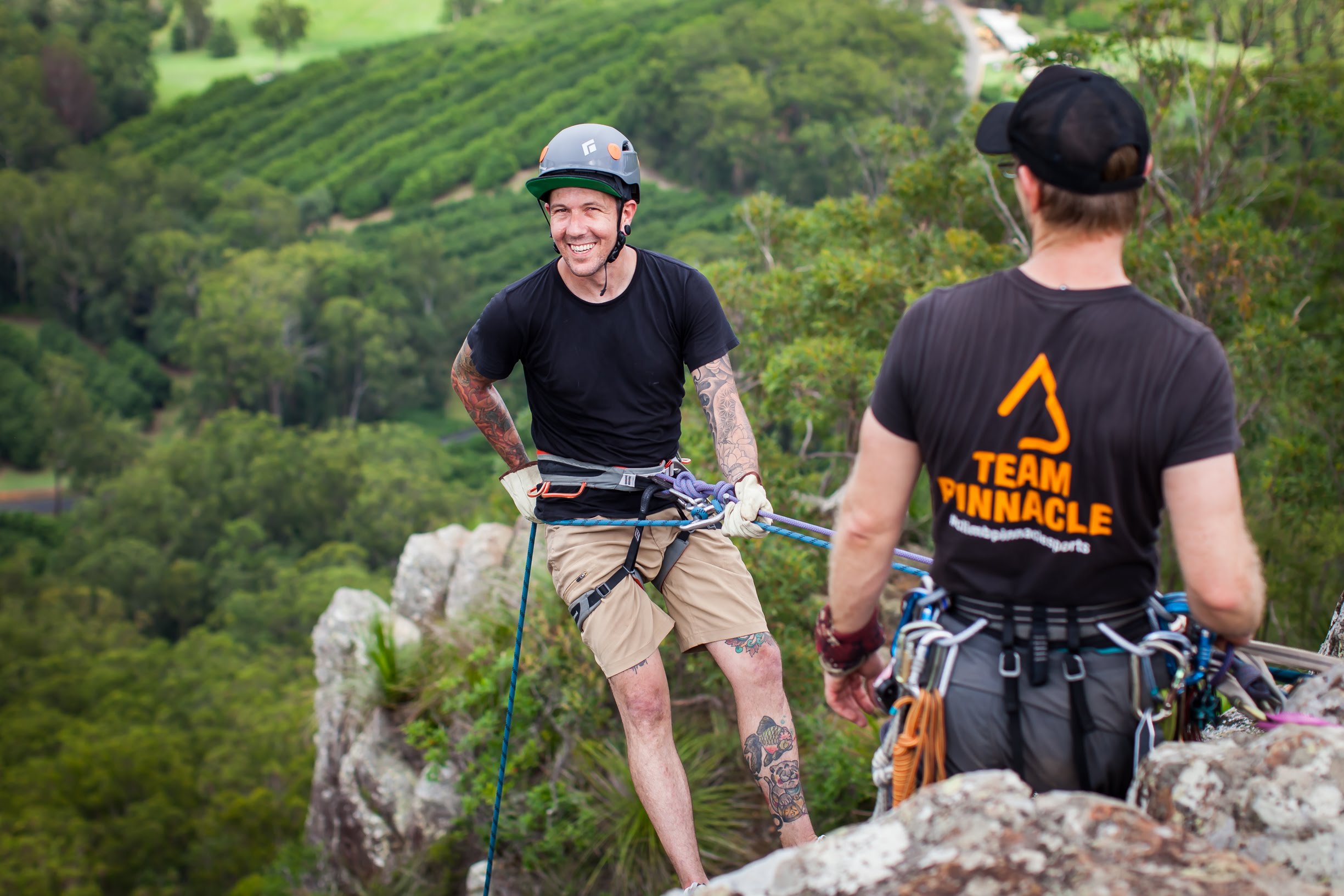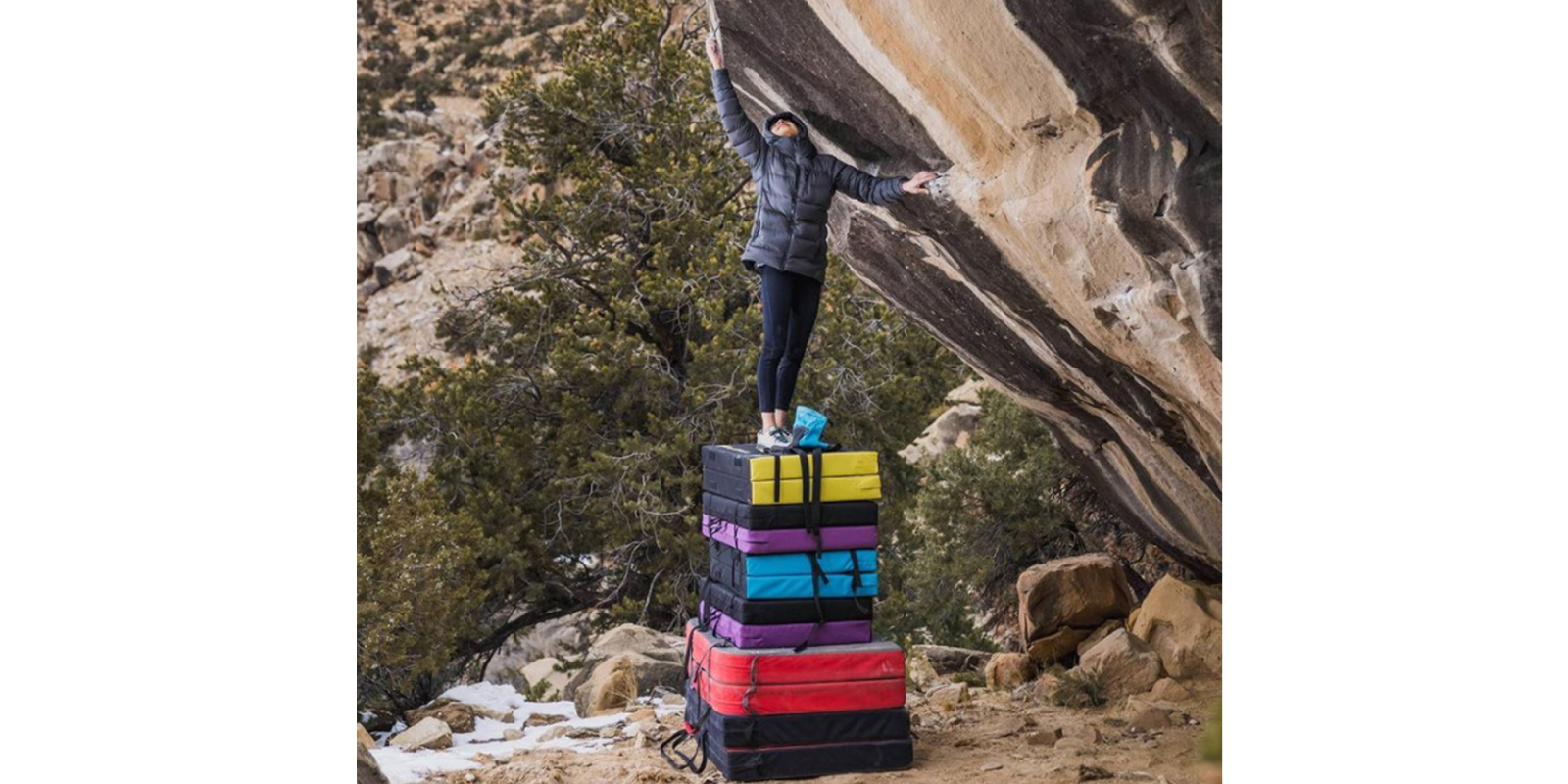
With the simplicity and accessibility of bouldering, the classic pastime of pebble wrestling has taken off stronger than ever in recent years. To get outdoors, you’ll need to provide your own fall protection, but what should you actually consider when buying a bouldering mat?
Size
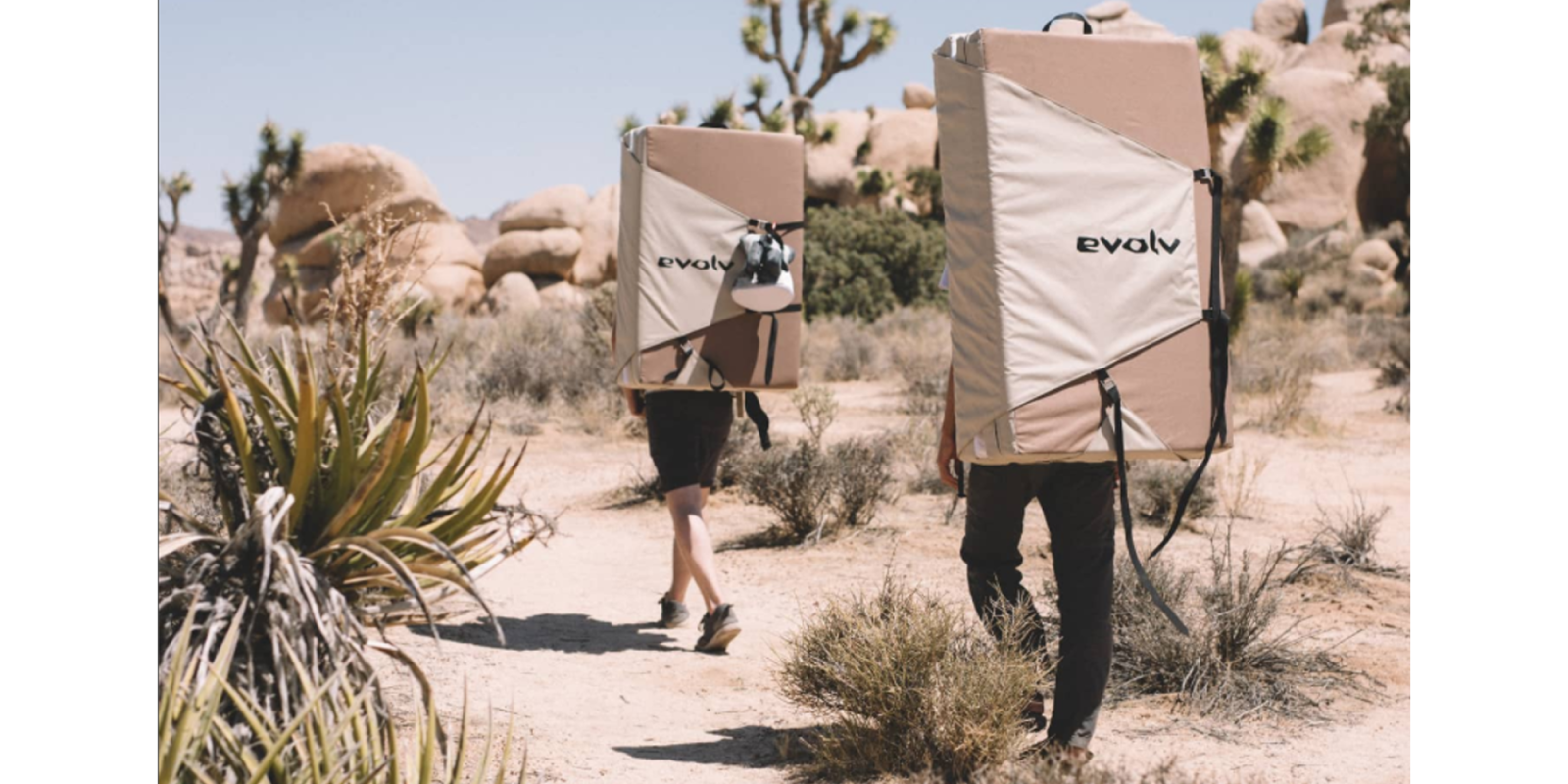
Boulder mats are available in a variety of sizes and yes: bigger is better. The larger the surface area, the safer the fall. While this may offer more protection, it’s not always the most practical option. Consider your transportation: Will your vehicle fit your boulder mat and a spotter? Is your mat a comfortable weight to carry for a long walk in? If these questions have you shaking your head, you may be better off with a medium sized mat (about ~150cm x ~120cm).
A medium sized mat would stand alone as protection for a shorter boulder with a flat base (and a dependable spotter), but we would recommend using multiple regular-sized mats together to create a secure landing area.
The smallest of the boulder mats is also known as a supplemental mat. While this wouldn't replace a regular boulder mat, these smaller, thinner mats are great for covering danger areas, such as tree roots, or rouge rocks. Supplemental mats such are great for boulder problems with a sit start — while your main mat covers the crux fall zone, the supplemental mat keeps your booty protected for the start.
Folding Style
Due to their bulky nature, boulder mats must fold in half to efficiently transport. There are a few styles manufacturers have created, each with their strengths and weaknesses.
Hinge
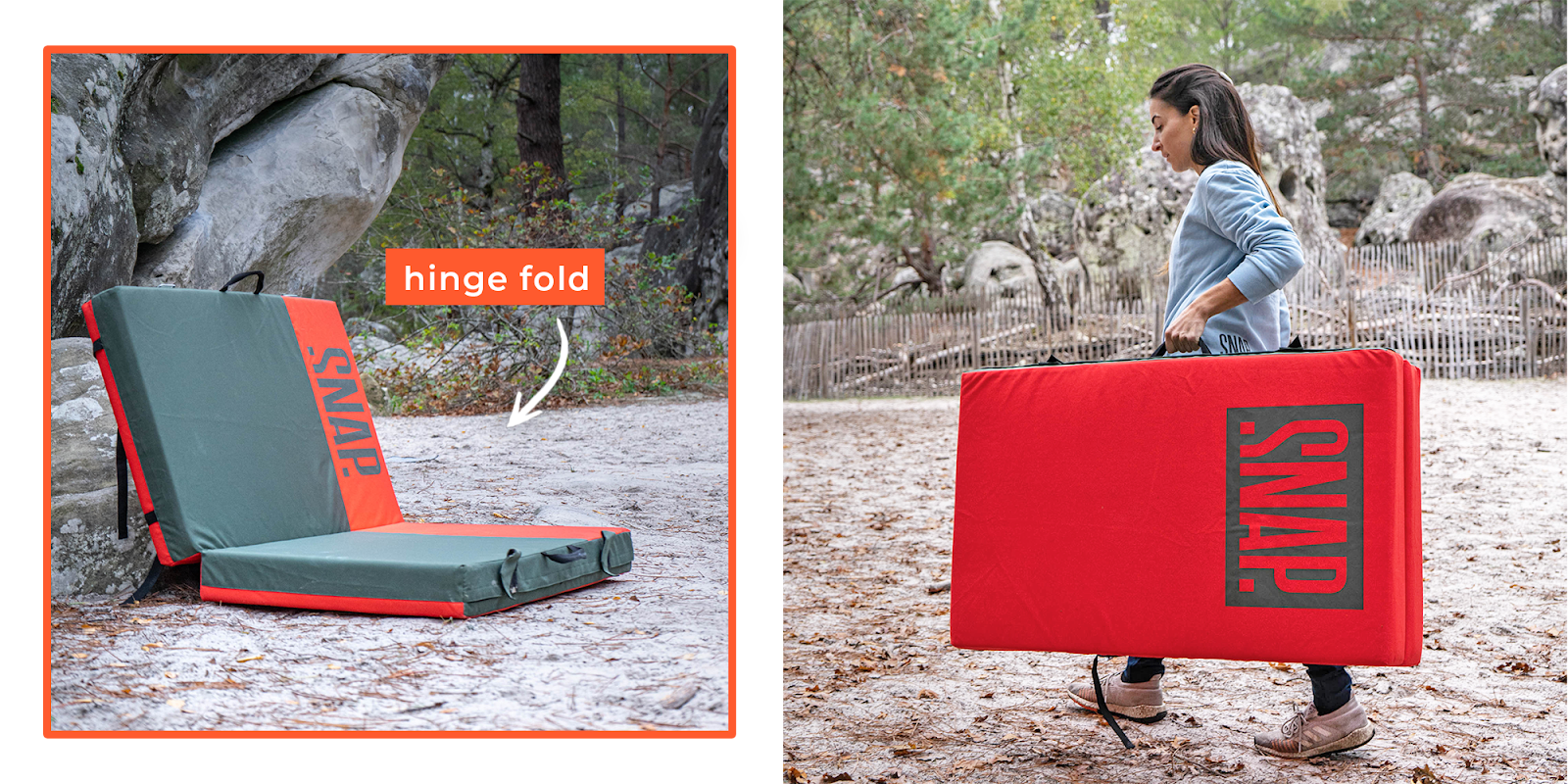
This is the most common closure. The hinge closure is created from a manufactured seam in the center of the mat that allows it to easily open and close like a book. As the foam is separated into 2 sections, when the mat is closed it doesn’t compress the mat’s foam, increasing the lifespan of the mat. The downside to this closure is there will always be a small gap along the seam where the 2 pieces meet. Some manufacturers such as Black Diamond have added velcro to this hinge for added support. When placing your mats, it’s important to consider any rocks or hazards that may lay near these weak points.
Taco
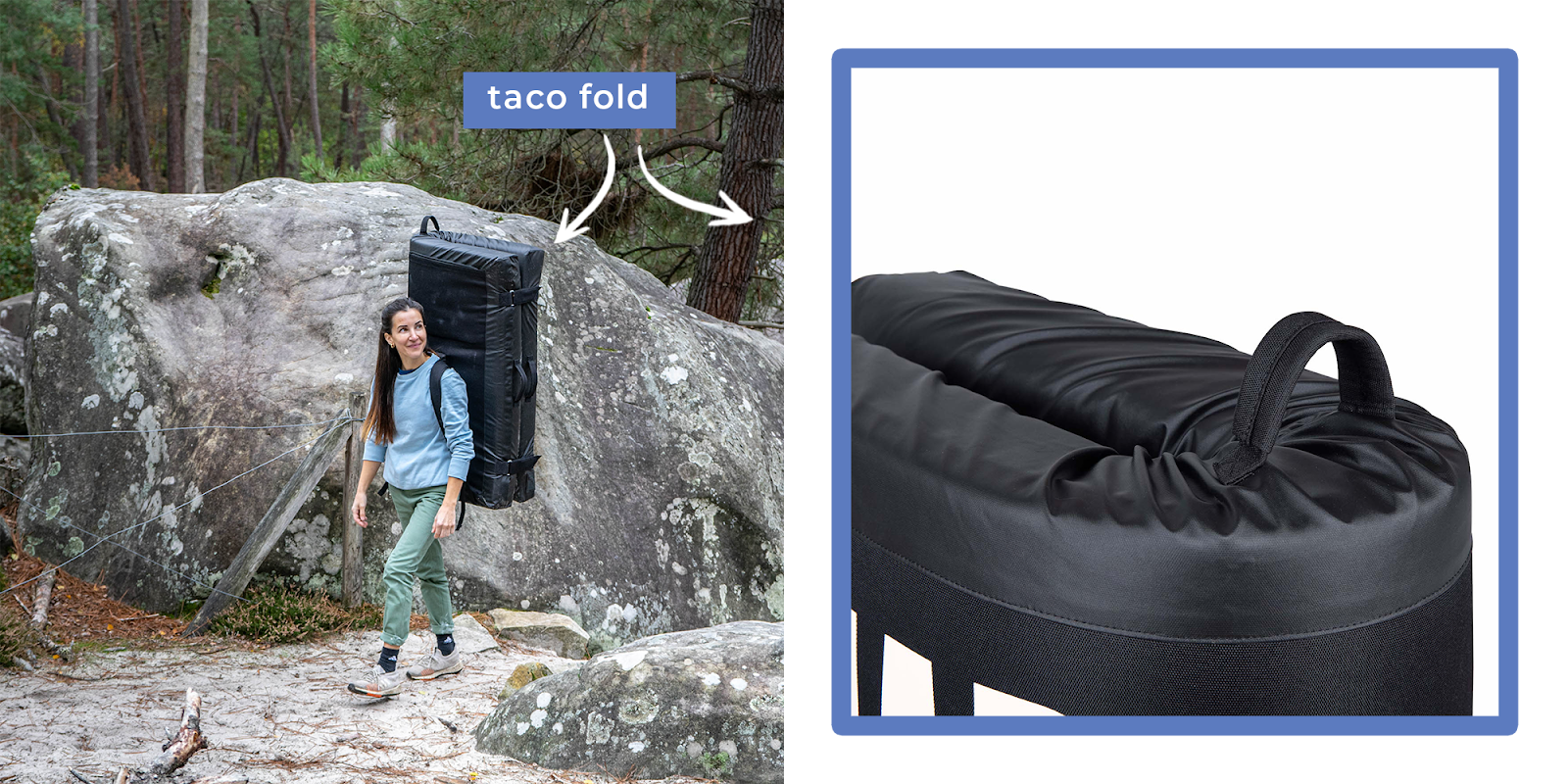
This style of mat is a single piece of foam which is then forced closed at the mid point for transportation. The benefit of this style of closure is there is no gap or gutter formed like the hinge method, however over time the midpoint of the mat will weaken over time. The best practice for maintaining this style of mat is to unfold it as soon as the transportation period is over, this will mean at home you will require more room to store this mat.
Materials - Inside and out.
Thread count matters. The higher the denier of the fabric, the more durable your mat will be in the high abrasive environments it’s thrown in. Some pads are made such as the SNAP. Stamina usea Thermoplastic Polyurethane coating which is non-slip and washable for better wear resistance and protection.
Internal padding makes a difference. Boulder mats are composed of 2 different foams: open-cell and closed-cell foam. Open-cell foam is spaced out with air and will spring back to shape after compression, absorbing the majority of the impact of the falls you take. Closed-cell foam is rigid, and does not collapse like the Open-cell foam. While the closed-cell foam doesn't absorb the impact, it prevents you from feeling the rocks under your mats when you’re taking a fall. Each mat has their own mix of layered foam, however we would always recommend feeling the mat you are purchasing, and consider if this is your main mat, or a secondary layering pad.
We hope you've found this guide useful! You're obviously going to get outdoors soon, before you go, have a read of our How to get into Outdoor Bouldering Blog for some useful tips and tricks!!
Looking for more great reads? Subscribe to our newsletter to stay up to date with the latest climbing tech, crag recommendations and upcoming events.

